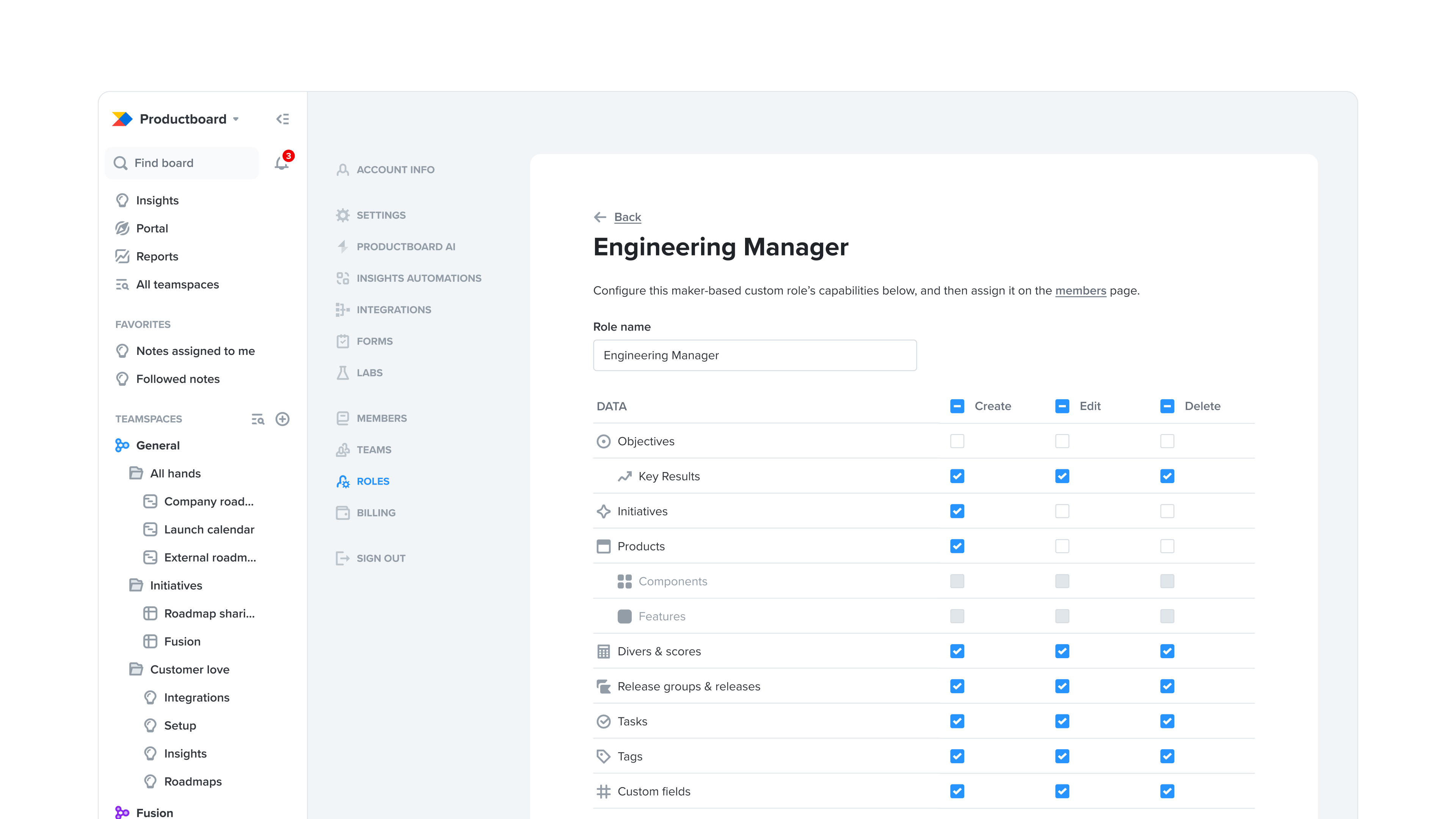How Productboard helps your product team be more customer-centric

In the world of product management, “customer-centricity” has become something of a buzzword. We all know we’re supposed to be empathizing with our customers, “getting out of the building”, and uncovering our users’ underlying needs. Blog posts and conference speakers regularly implore us to block off time on our calendars to ensure we’re speaking with a handful of customers every week. And most of us are now conducting continuous product discovery to validate our ideas with customers as they progress from conception to delivery.
If we do all those things, can we say we’ve checked the customer-centricity box? ✅
Well, no… These practices form the foundations, but there’s far more we can all do to ensure we’re building the right features for our customers, that we deliver memorable product experiences, and that our products win in the marketplace. (That’s what this is all about, after all!)
But the good news is this doesn’t need to be time-consuming or hard. A product management system like Productboard can help, all while helping you spend less time prioritizing what to build — not more. Let’s explore how.
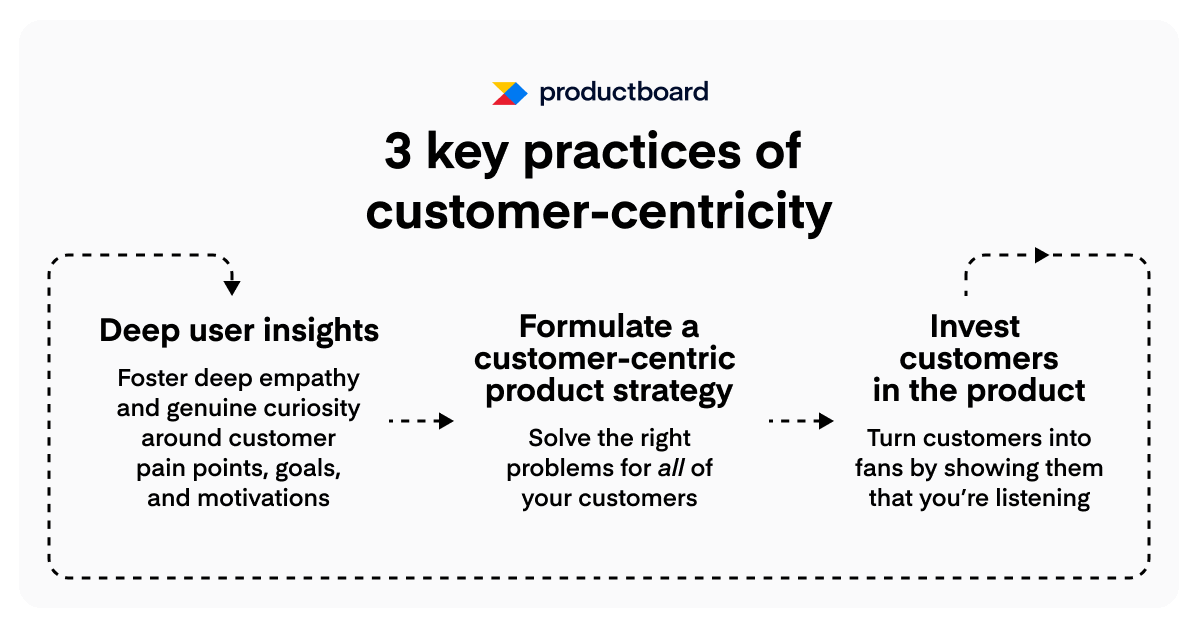
Gaining deep user insight
“Product management done right is building with, not for, customers. They should be at our side throughout — from that early discovery through to launch and post launch, helping us advocate for others to adopt these new capabilities. They should be our champions because of the delight and because we solved the problem they had in a way that was valuable.”
For starters, product management software like Productboard can help you understand what your customers need. It will mean you won’t be starting from scratch as you begin prioritizing for the coming quarter. And when it comes time to work on a feature, you’ll already have a ton of insights about why customers need it. You’ll be sure to deliver the right solution right off the bat.
1. Consolidate all your product feedback in one centralized repository
The first step of being customer-centric is getting all those incoming customer ideas, requests, and pieces of feedback in one centralized, searchable Insights repository. If that feedback is scattered across email, chat apps, support tickets, spreadsheets, Google docs, and notetaking apps today in your organization, imagine what a relief it will be to get it all in one place.
Want to see what users have to say about user roles and permissions? Just search for a topic across hundreds or thousands of customer inputs and see for yourself!
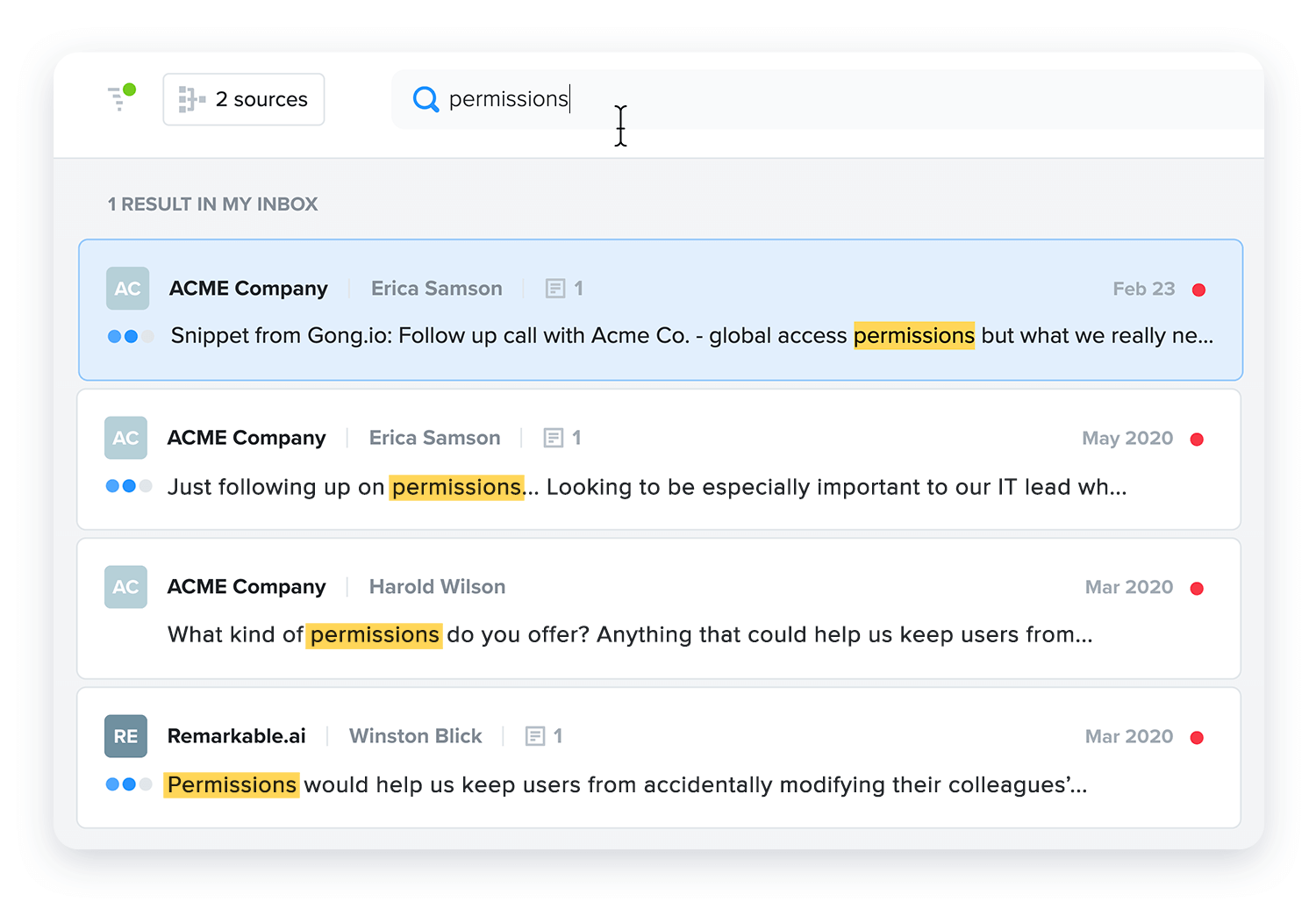
And if a product manager leaves the company, you won’t have to worry about losing all the customer insights captured only in their head, since far more of those inputs will be documented in your single source of truth for product management.
Productboard earns you back your time by doing the heavy lifting for you. A host of native integrations and APIs automate the process of consolidating feedback from many systems like Zendesk, Intercom, Slack, Microsoft Teams, Salesforce, and email. There’s even a Chrome extension you and your colleagues can use to easily submit ideas and requests on the fly.
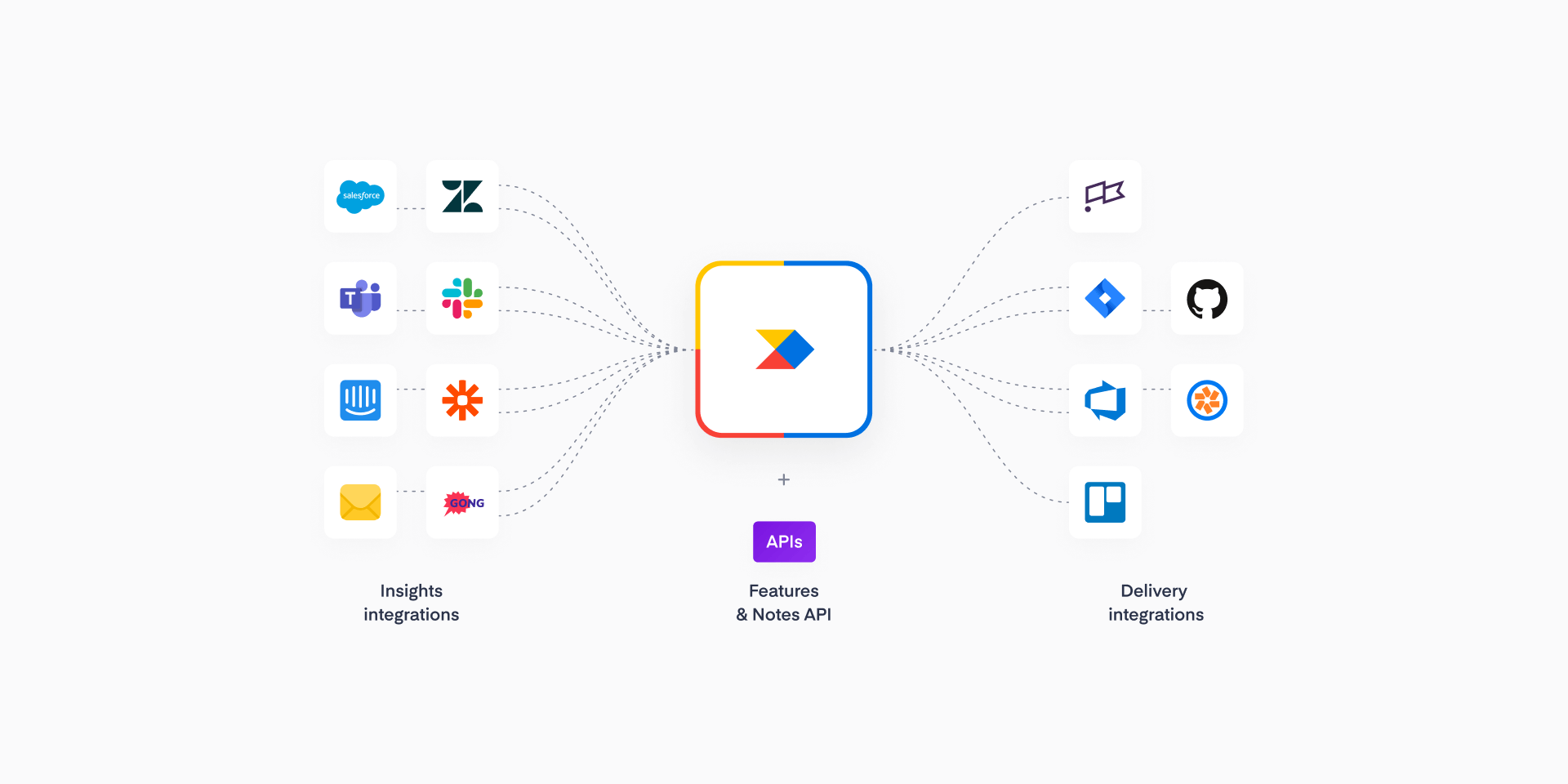
2. Multiply the size of your user research team
With Productboard, your customer-facing colleagues on sales, support, marketing, and customer success become extensions of your user research team. They can provide inputs based on what they’re hearing on the frontlines — through the integrations listed above as well as the customer-facing Product Portal that we’ll discuss later on.
They can even leave feedback on behalf of customers directly on feature ideas they see on your roadmap.
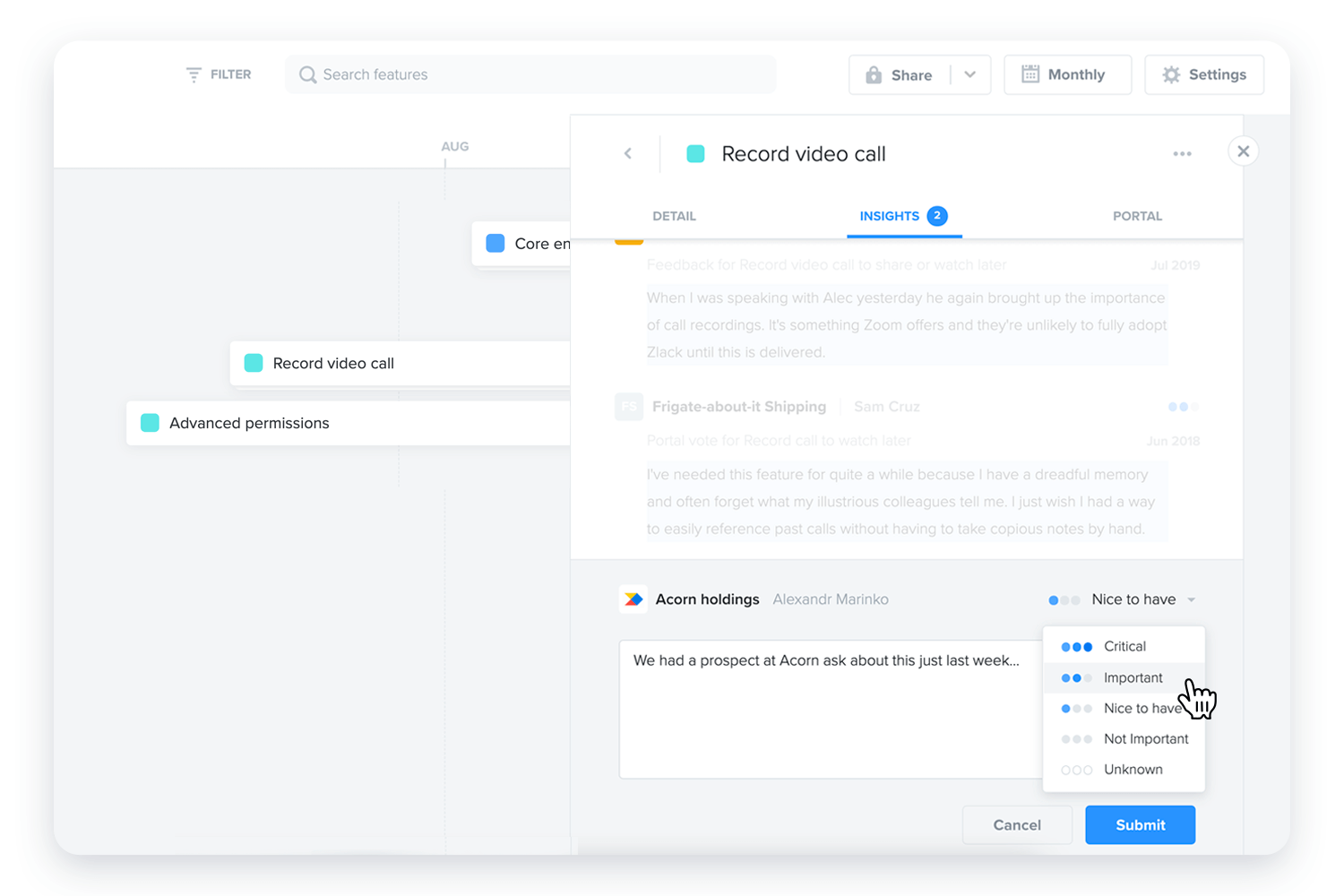
This is just one more way to get feedback into Productboard’s Insights repository. And once feedback is all in one place, you can really start acting on it. That’s what we’ll explore next.
3. Highlight the most important insights
You know how a given support ticket or email might contain a handful of separate requests? Meanwhile, a lot of the content in a given message might have to do with logistics around setting up an upcoming meeting, not the actual request. For both these reasons, it’s critical for product managers to be able to highlight just the most important insights about user needs, and have the flexibility to link each insight to one or more related feature ideas. This is where Productboard shines, and its capabilities far exceed those of more simplistic tools where you can only “promote” feedback into feature ideas 1:1.
In the example below, we’ve found an insight where a user has requested improvements to user roles. You can link such an insight to related features on your own, or Productboard can automatically suggest related ideas that it has found on your Features board, with the help of natural language processing and machine learning. This vastly speeds up the process of analyzing all that incoming feedback from customers and colleagues.
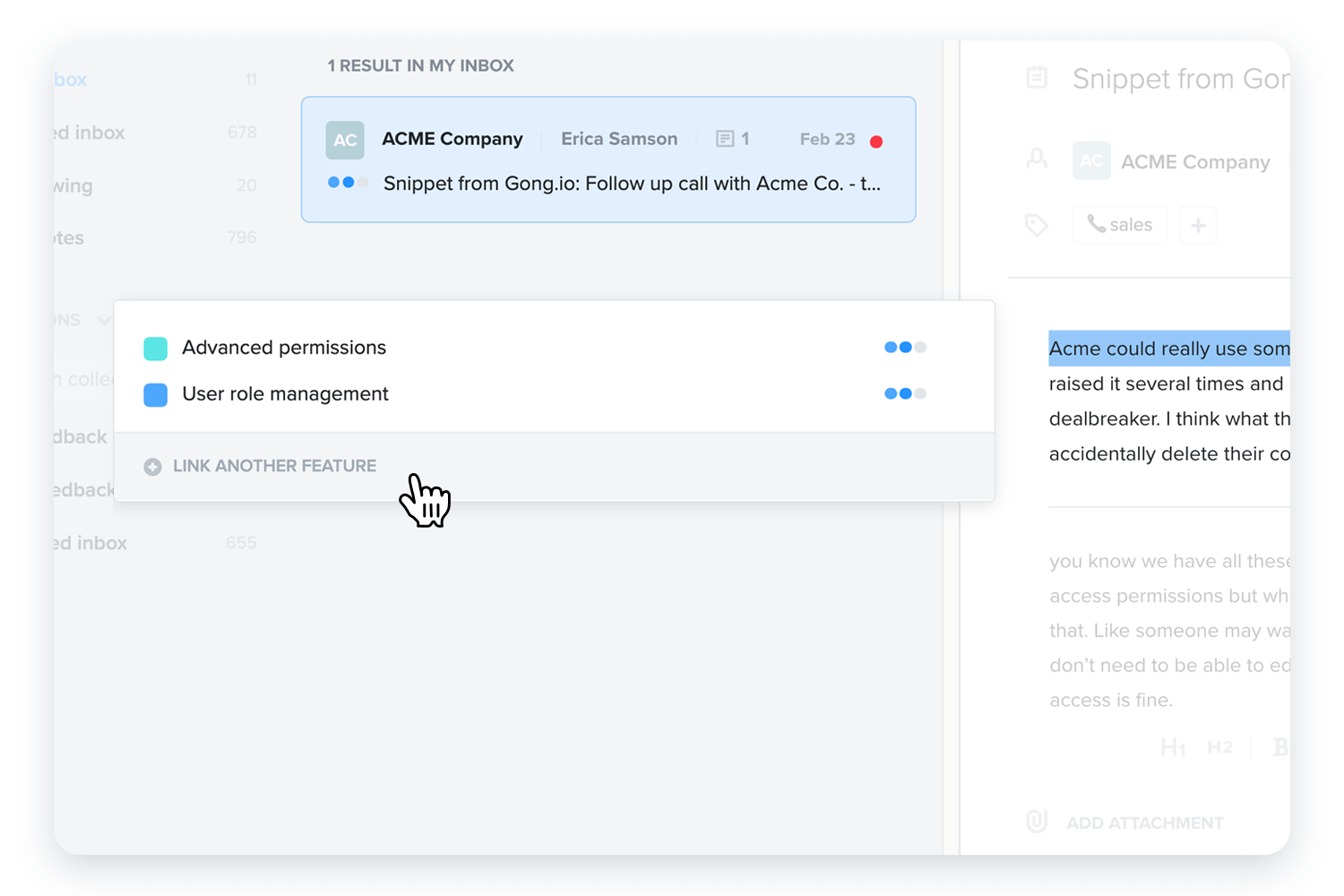
4. Identify your top requested features
With Productboard’s user impact score, you can easily see which features are needed the most.
The score is calculated by taking the number of unique users who’ve expressed a need for some feature or idea and weighting it by how important the idea was to them. It means that features that many customers have said are “critical” will have a higher score than those “nice-to-have” ideas.
In Productboard you can sort and filter all your feature ideas by user impact score to zero in on your customers’ most pressing needs.
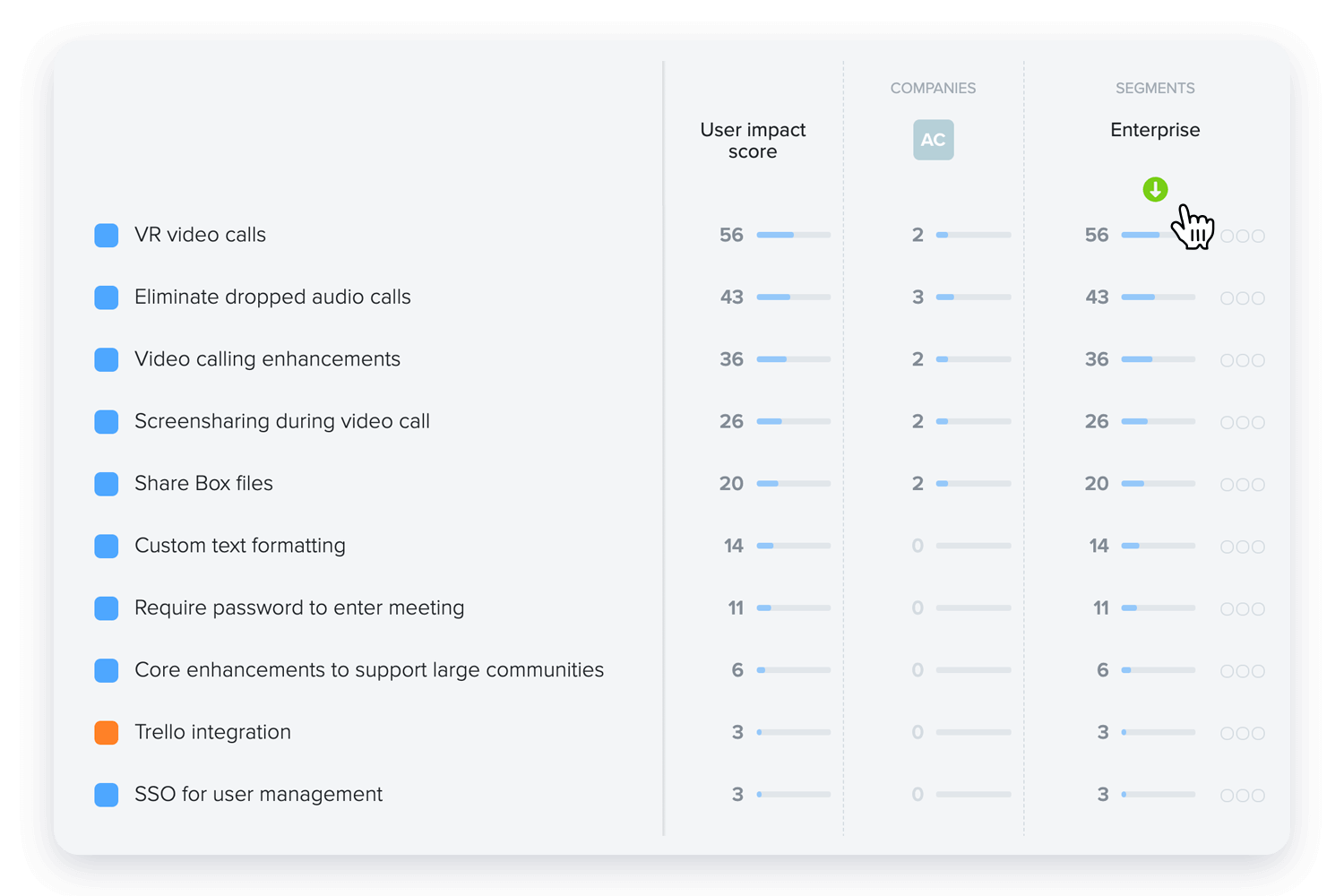
Formulating a customer-centric strategy
Seeing your top-requested features is a great start. We all dreamed of being able to do this in the past as we sat there staring at our prioritization spreadsheets!
But being customer-centric does not mean catering to all of your customers equally. It also doesn’t mean trying to please everyone. In fact, that’s the surest recipe for a mediocre product that doesn’t quite meet anyone’s needs.
In this section, we’ll explore how Productboard can help you drill in further on the feature ideas that matter to certain types of customers, and to your business.
5. Identify what matters most… to your customers who matter the most
Productboard helps you drill in on the needs of your most important customer segments. For example, you can see exactly which features have been requested with “critical” importance by companies with ARR > $10,000, from the SaaS industry, and with over 25 users in your system.
Or you could see what churned customers said was “critical” before they moved on. You can define these dynamic customer segments however you’d like, using data fields synced with Salesforce, or imported from any CRM.
6. Identify your most valuable feature ideas for closing new business
In addition to pleasing customers today, you also need to keep your business afloat and keep growing in the mid-term.
Productboard lets you see the total opportunity value of each feature idea based on the prospects who have requested it. It's all based on opportunity data synced from Salesforce.
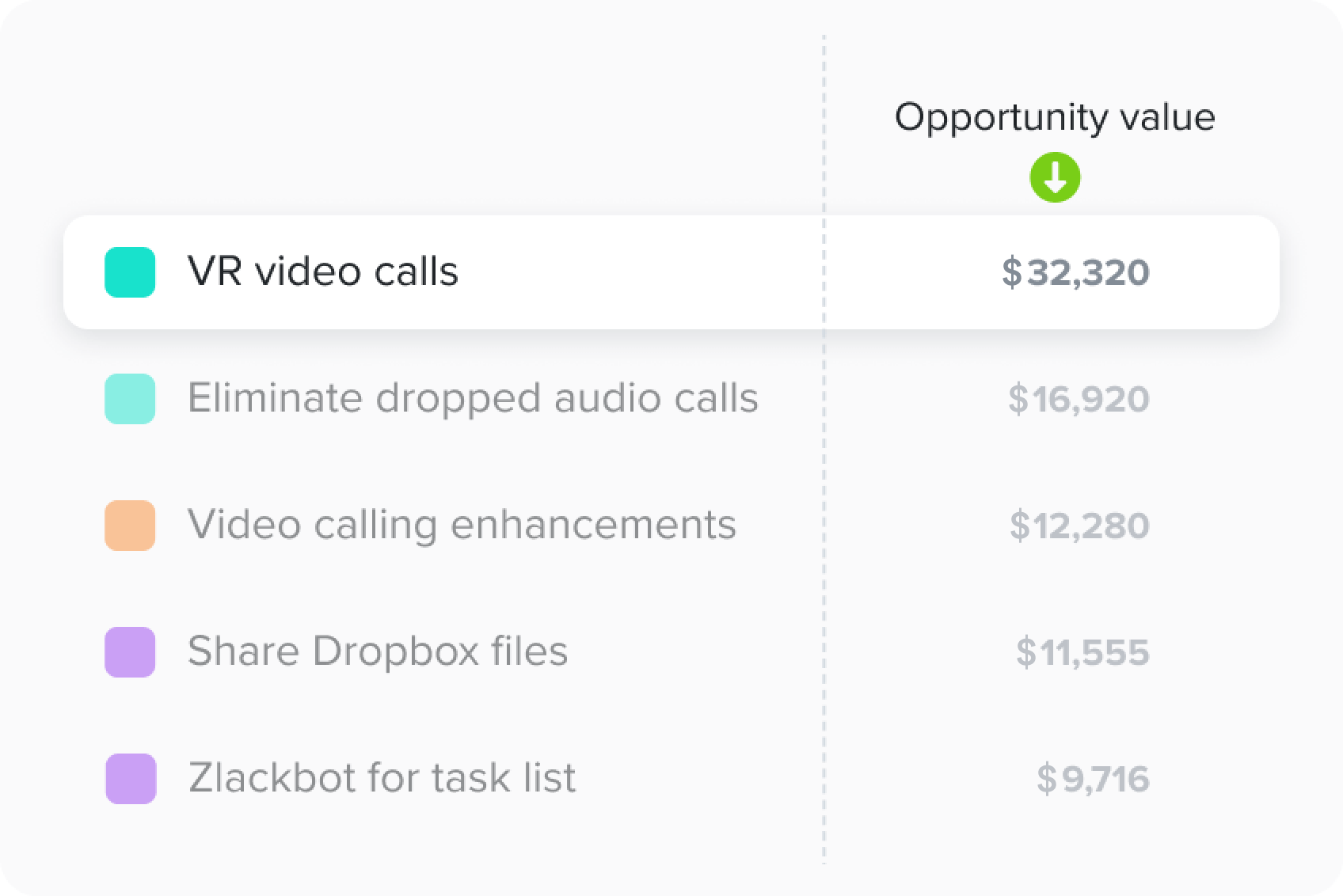
Investing customers in the product
As product makers, we dream of our customers becoming avid fans of what we create. We want our products to bring them joy, help them excel at their work, or make their lives a little easier. But it's not the product alone that drives customer loyalty, it's also whether you bring them into the fold. When customers get excited about your product vision, they feel like they're on a journey with you. When they see that the features they care about are planned, they're sure to stick around. When they can tell you're listening to their feedback, they feel more affinity to your product, and your company.
7. Validate your ideas and share what's planned with a Product Portal
Productboard's Product Portal is a modern take on the feature request forum. It's a place you can share ideas under consideration and features that are planned with your customers, but unlike feature request forums that can turn into free-for-alls, everything here is curated by your product team. There's less noise and less overhead managing community interactions.
Most importantly, all the feedback you receive on the Portal is truly actionable. It feeds directly into the prioritization data you have captured in Productboard, so you can immediately put it to use in deciding what to build next.
Check out Productboard's own Product Portal! https://productboard.com/portal
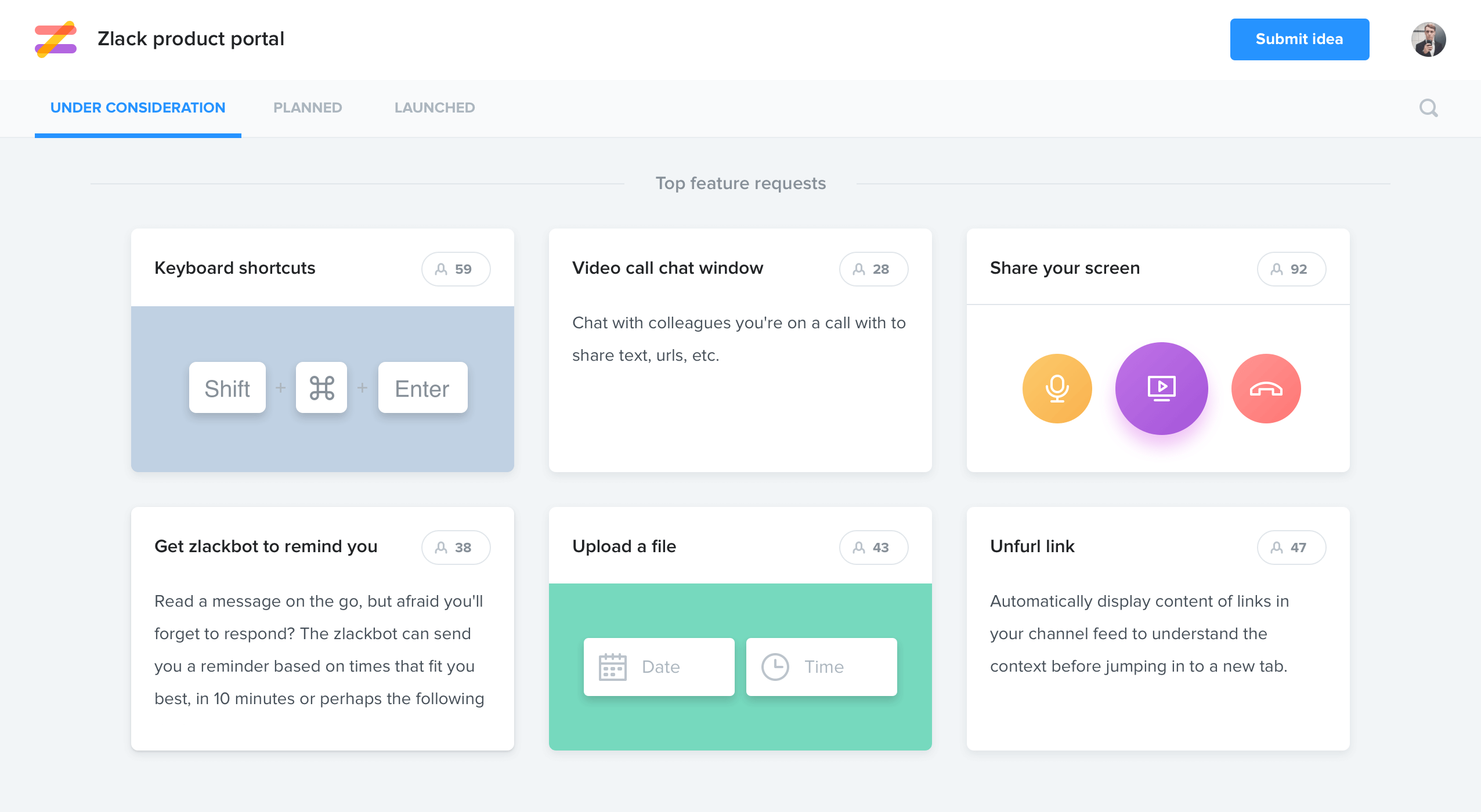
8. Celebrate what you've launched
You can customize the Portal's tabs and subsections to represent whatever you'd like. It means you can group ideas that are currently in beta or that have been launched. This is a great way to keep customers informed about the latest functionality. You can even post release notes that help them understand how to get the most value from your product.
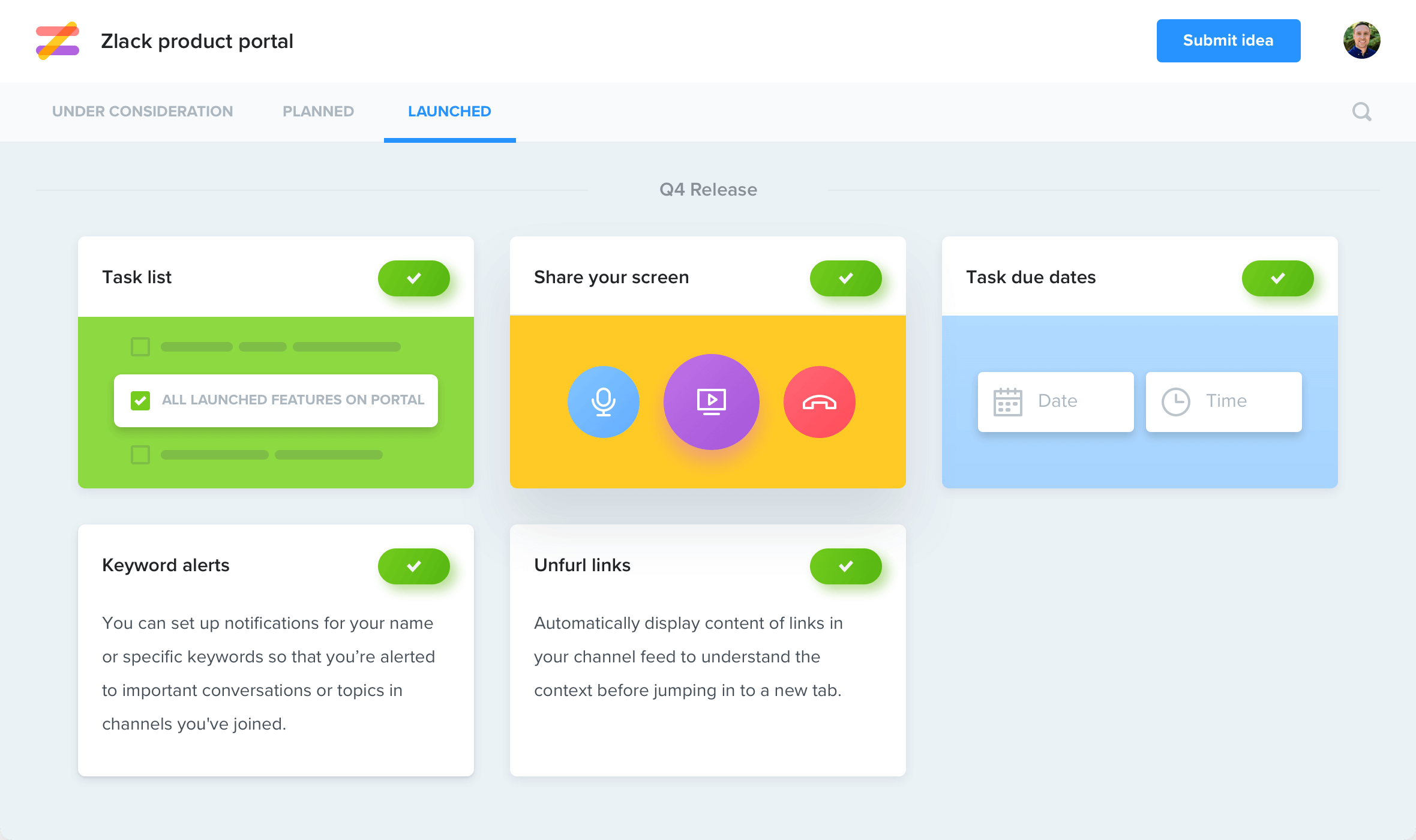
9. Close the loop and ensure customers feel heard
Don't just count on customers to check your Product Portal on their own! Productboard lets you push email notifications to customers when you've made progress on a feature they've expressed a need for in the past. If it's a feature you're beginning to work on, this could be a highly efficient way to recruit customers for user interviews and product discovery. If it's a feature that you're launching, it's a great way to delight customers and show you acted on their feedback.
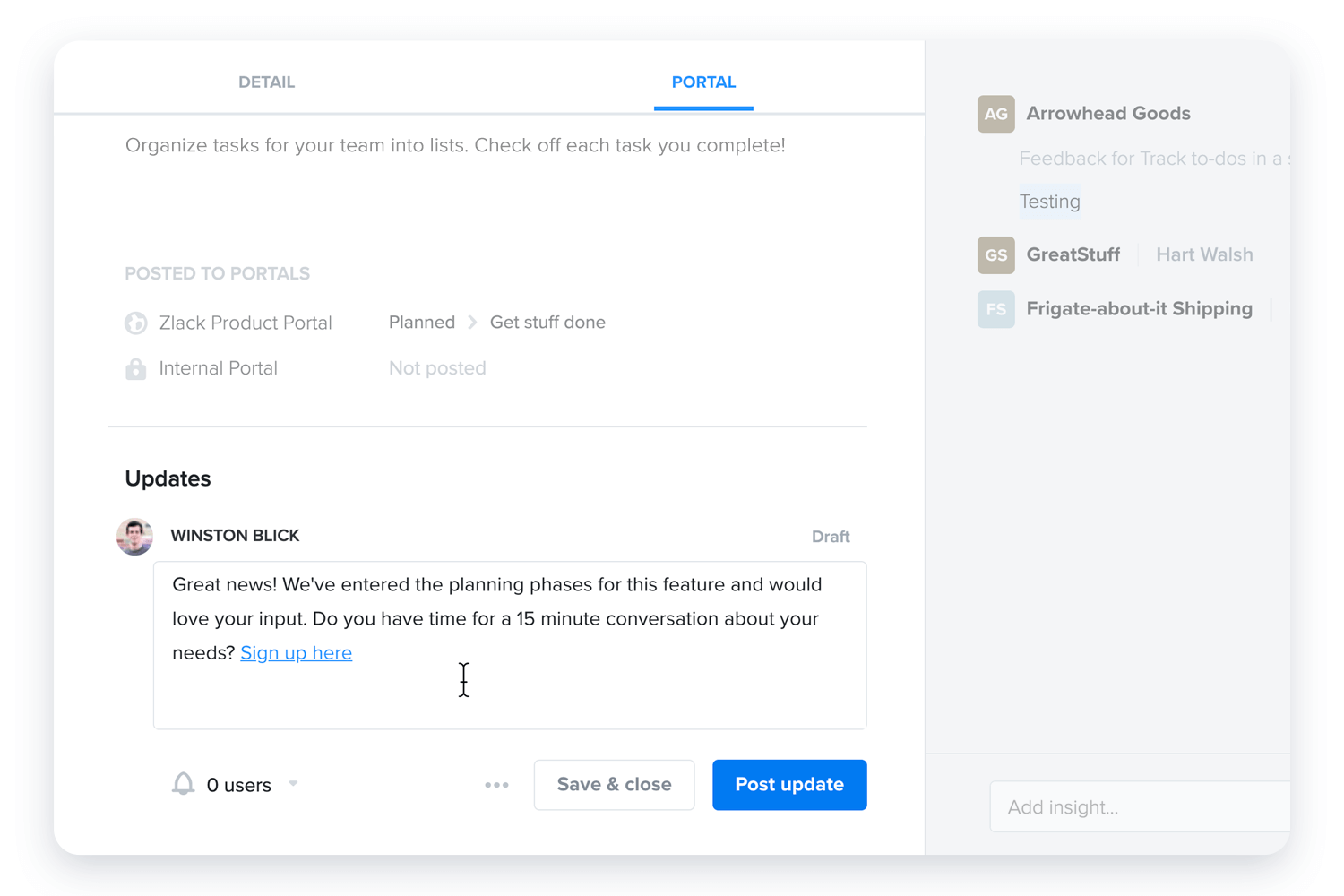
10. Instantly create roadmaps tailored for any given customer
The best part about having all your product data in a dedicated product management system is the sheer number of ways it can make your job easier. Once you've associated customers' feedback with certain feature ideas, Productboard now knows what features those users/companies need. It means you can instantaneously filter your company roadmap to show just those features requested by Acme co. Prepare for your next quarterly business review in 10 seconds flat!
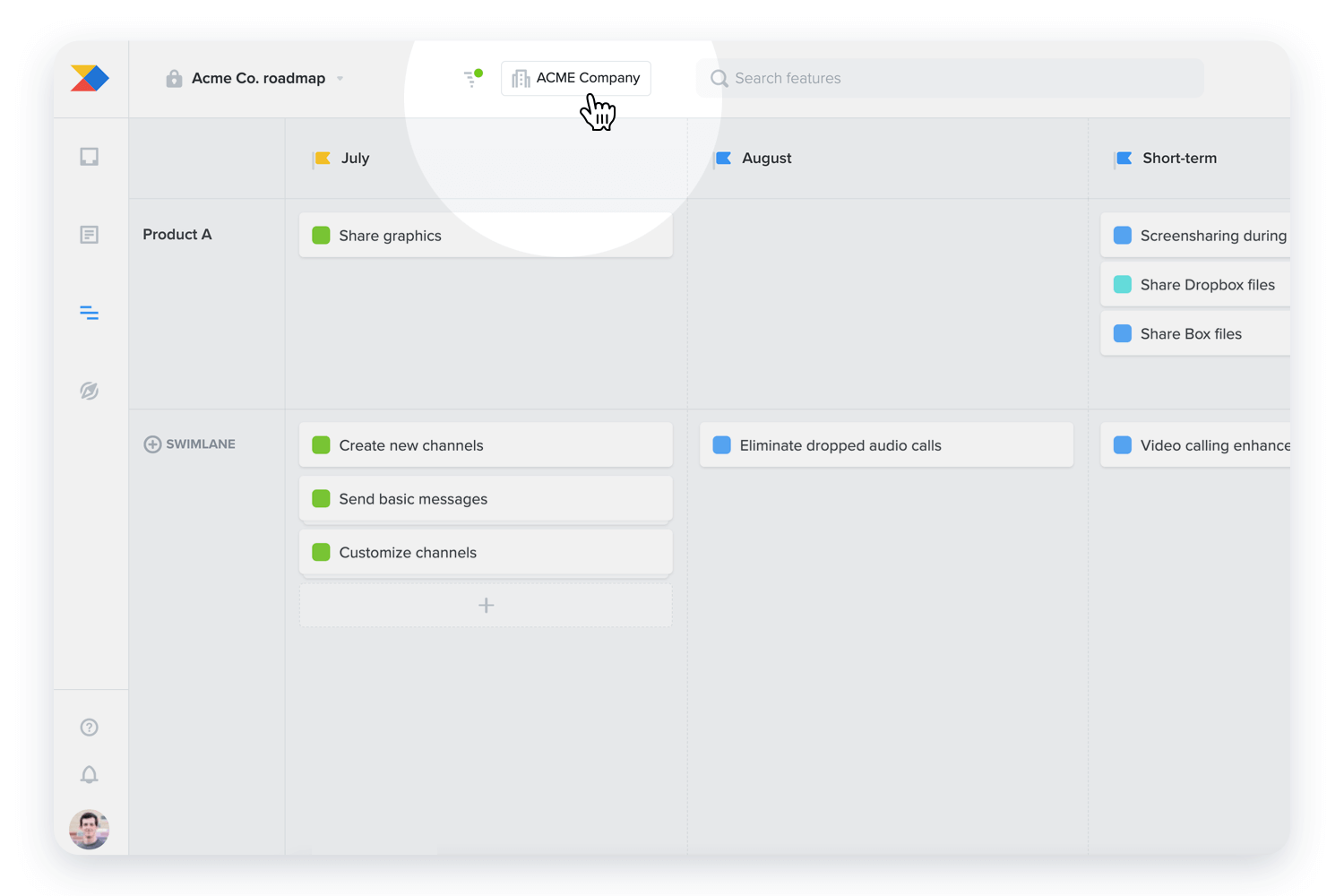
The business value of being customer-centric
As we said at the outset, the best product teams are customer-centric because it's a winning formula:
- We build the right features the first time, so we don't spend weeks or months working on the wrong thing.
- We solve real underlying user needs to truly delight customers and drive revenue.
- We accelerate the product discovery process and avoid delaying delivery teams with poorly defined opportunities/features.
- We invest customers in where our products are headed, increasing loyalty, customer retention, and growth by word-of-mouth.
- We ship features with high adoption and glowing customer reviews, so product teams feel energized and employee morale improves.
- We react to customer input faster, so we don't get blindsided when VIP customers churn.
- We spend less time persuading and aligning others internally — the voice of the customer is powerful for driving stakeholder buy-in.
- We decrease ramp time for new product manager hires by providing immediate access to a wealth of categorized user insights.
- We target the needs of the customer segment most likely to drive our company's long-term success.
When we aren't customer-centric, it's because we only have so many hours in a day. But product management software like Productboard can help you set up customer-centric processes that scale, and implementing these will have an enormous upside for your organization.
Today's market is too competitive to sustain companies that neglect customer-centricity. And for each one of us product makers, life is too short to spend it building products and features customers don't really need.
Productboard is the customer-centric product management platform that helps teams get the right products to market faster. Over 5,000 companies, including Microsoft, 1-800-Contacts, and UiPath, use Productboard to understand what users need, prioritize what to build next, and rally everyone around their roadmap. Start your free 15-day trial of Productboard today.





